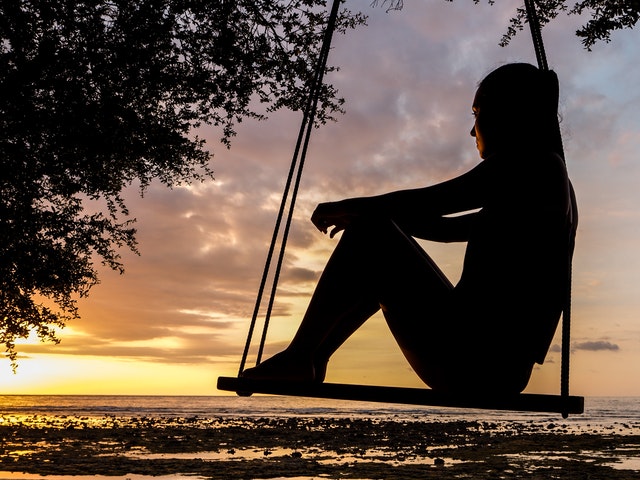A few weeks ago I attended a social gathering of holistic practitioners. The conversation drifted (as it often does in such groups) to how to “get more clients” and make a sustainable living.
My companions were compassionate souls who truly want to make a difference in the world. But as I listened, I could hear echoes of the shadow projections and fears of the business. Things like:
- Holistic services are considered too “woo-woo” and people aren’t interested
- Practitioners feel like there’s a scarcity of clients, and are afraid to work with other practitioners because they might lose business
As we embark on the adventure of building a business, let’s start by scouting the terrain. By looking at the latest demographics and psychographics on the people we seek to serve, maybe we can begin to dispel these myths and begin our journey unafraid.
Lifestyles of Health and Sustainability
Clients for our holistic businesses fall into what marketers call the Lifestyles of Health and Sustainability (LOHAS) demographic. LOHAS consumers are searching for alternatives that focus on health and personal development, the environment and social justice. In 2008, the US LOHAS market accounted for 41 million adults (19%), with a total market value of goods and services of approximately $209 billion in 2007.
LOHAS consumers, called “cultural creatives,” by author Paul H. Ray, tend to see the interconnectedness of life and world events and “demand products of equal quality that are also virtuous.” According to a website dedicated to the LOHAS market:
[LOHAS Consumers] believe there is commonality that transcends any operational and structural differences. The interconnections between global economies, cultures, environments, and political systems play a large role in the holistic worldview of the typical LOHAS Consumer, but equally important are the interconnections of mind, body and spirit within individuals. This focus on Personal Development, with the ultimate goal of achieving his or her full human potential, is of utmost concern to the LOHAS consumer. The current growth in this market group strongly supports the notion that spirituality is no longer relegated to the New Age periphery but is undeniably migrating to the center of mainstream cultural awareness.
New Vision of Health
Members of this demographic are willing to spend their time and money on solutions to increase their quality of life. The Center for Disease control released a study on the use of “complementary and alternative medicine.” In 2002, it found that of American adults:
- 18.9% have bought natural products
- 11.6% practice deep breathing exercises
- 7.6% meditate
- 7.5% use chiropractic care
- 5.1% practice yoga
- 5.0% have had a massage
- 3.5% use diet-based therapies
Overall, more than 62% of Americans in 2002 used some “alternative” approach to health, including those who employed prayer and/or positive thinking to improve their personal health.
Spiritual Seeking
Cultural creatives are also actively seeking alternative worldviews that reflect their holistic vision and search for meaning. In his book Spiritual Marketplace: Baby Boomers and the Remaking of American Religion, author Wade Clark Roof, found that approximately 14 percent of baby boomers were in the process of making a dramatic break with traditional American religions. According to the Journal of Religion and Society:
[Who Roof calls] Metaphysical Believers and Seekers place a radical stress on bodily experiences in their spirituality… Although the majority … were raised as conservative Protestants, they have morphed into a grab bag of religious identities – neo-pagans, Wiccans, goddess worshippers, Zen Buddhists, Theosophists, nature-lovers and New Agers. Many have hyphenated identities, such as eco-spiritualists or vegetarian-Unitarians.
Studies have also shown that the market for “new age” and “metaphysical” subjects is increasing, especially among younger demographics. According to a 2003 Harris poll:
- 51% of the public, including 58% of women, and 65% of those aged 25 to 29 but only 27% of those aged 65 and over believe in ghosts.
- 31% of the public believes in astrology including 36% of women and 43% of those aged 25 to 29 but only 17% of people aged 65 and over, and 25% of men.
- 27% believe in reincarnation, that they were once another person. This includes 40% of people aged 25 to 29 but only 14% of people aged 65 and over.
Another study from Religious Tolerance (2006) found that identification with Wicca and other neo-pagan religions is doubling about every 18 months. Growth is particularly obvious among some teenagers, who are rejecting what they feel is autocracy, paternalism, sexism, homophobia, and insensitivity to the environment
Questions for Consideration
Look around you…If one in five adults is actively seeking ways to make their lives healthier and more meaningful, why are holistic practitioners afraid to talk about what we do?
If the market for our products and services totals more than $200 billion and growing, why do we fear that there aren’t enough clients to go around?
If new age consumers are looking for ways to transform their lives and the world, how can holistic practitioners explain what we do in ways that are meaningful and compelling?



